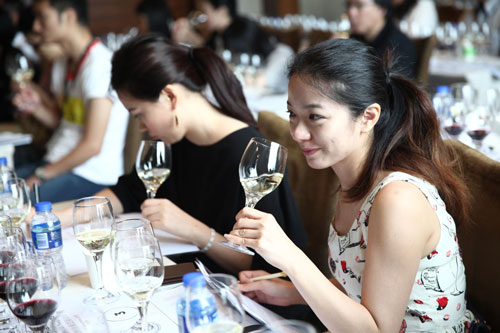With many of the world’s biggest wine producers beating on China’s door, it’s taking a concerted effort and some smart thinking by NZTE and New Zealand Winegrowers to engage Chinese wine drinkers.
New Zealand wine sales to China have recently enjoyed exponential growth. In 2008 they generated just $2.44 million. In the year to June 2012 sales had climbed to $25 million, and sales growth in the most recent 12 month period has been around 30 percent.
However, the reality is that in a country the size of China, creating in-market awareness and appreciation of the New Zealand Wine story requires substantial ongoing efforts – and competition from other wine-producing countries has never been fiercer.
Success, however, has come through a collaboration project between New Zealand Trade & Enterprise and New Zealand Winegrowers. The Wine High Impact Programme (HIP) is multifaceted in its approach, and has indeed delivered high impact.
Mike Arand, New Zealand’s trade commissioner in China, says the goal is to build the profile of the ‘NZ Wine’ brand story in China through education, promotion and knowledge building – thereby encouraging individual wine suppliers to grow their sales of New Zealand premium wines. The key focus of the programme includes:
• Engaging key opinion leaders (KOLs) such as writers, educators, wine experts and bloggers who can influence the purchasing decisions of a new generation
of young, educated and wealthy Chinese.
• Targeting promos to those KOLs, the trade and media through a variety of activities – from in-market events such as participation at key trade shows, to hosting those influencers in New Zealand.
• A concerted and sustained programme of PR, traditional and social media to deliver consistent messages about New Zealand wine.
• Delivering a Chinese language ‘NZ Wine’ education programme to build the knowledge of the influencers mentioned above, and the sales personnel of importers and distributors selling Kiwi wines.
“The project also includes supporting New Zealand wine companies to build scale and presence in-market – in particular by fostering collaborative efforts that enable companies to achieve greater critical mass or in-market representation,” says Arand.
Providing assistance and knowledge to build confident, capable companies is another aim of the project. “Workshops and market intelligence to build the knowledge and confidence of our wineries so they can make informed decisions on market entry and development strategies.”
The main emphasis of this ‘grassroots’ collaborative promotion is to target social media channels in China, and this was the brainchild of the NZTE team in China with some input and direction from several representatives of NZ Wines based in China.
Through Beijing-based PR firm Grebstad Hicks Communications, an online ‘blogger’ competition was developed for Weibo (China’s Twitter/Facebook equivalent) to identify various influential Chinese online personalities in the food and beverage sector. The Weibo campaign, held during March, produced 381 applicants, a thousand new fans to weibo.com/nztewine and almost nine million page views within two weeks.
The two winning bloggers were selected according to their influence and following in the F&B space on Weibo; their ability to tell the ‘NZ Wine’ story to a targeted market; and skills in delivering compelling daily Weibo posts.
Xiao Ye Pan, who has more than 118,699 Weibo fans, and Jia Jia Zhu, who has more than half a million, were subsequently hosted for a week at four New Zealand vineyards. Arand reports that the promotion was highly successful with a large increase in social media activity. NZTE’s excited by the reach and opportunities provided by such online promotions and plans similar activity in upcoming months.
China’s wine market is growing fast – but it is highly competitive, with France still dominating the import wine market, Australia taking a large share, and Chile aiming to be a top premium wine supplier within four years. This is why the NZTE/NZW project is intent on hammering home the ‘NZ Wine’ story. With just a 1.5 percent share of the premium wine market representing around 18 million Chinese wine drinkers (who in turn make up less than 20 percent of the total wine-drinking market), New Zealand is a tiny player. Finding the right importer or distributor is still a major challenge – although Arand says many larger ones do stock a New Zealand brand. “Other new and smaller operators often don’t have the network to supply to the trade. The supply chain in China is also expensive with the retail price often being 2.5 to 3.5 times the landed price of the wine – and much more for hotels and restaurants,” he says. “Another challenge is the need for meticulous attention to detail on paperwork and labels to comply with importing and retailing regulations.”
Looking ahead the NZTE/NZW collaborative project will continue with more of the aforementioned activities. “It’ll build on the knowledge promoted to date to further tell the story of NZ Wine’s diversity, purity and exceptional value for premium wines,” says Arand.




